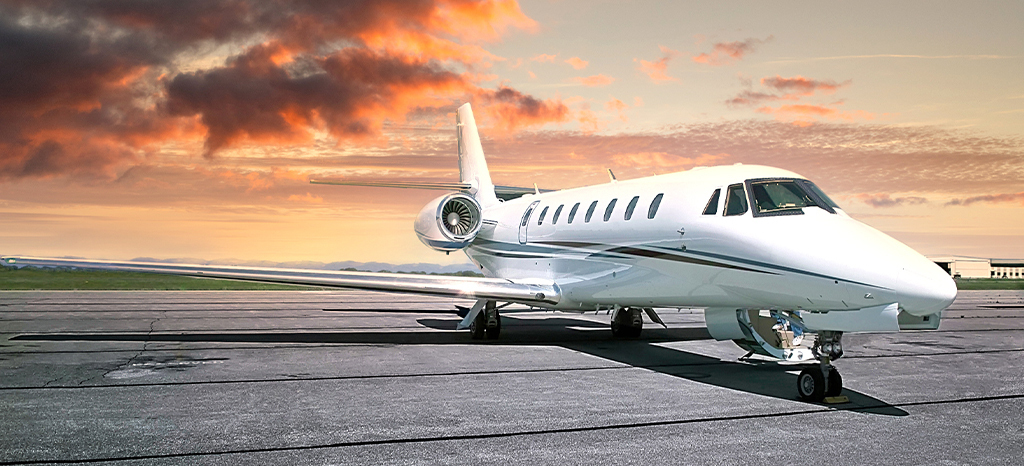Global Aerospace Offers Valuable Insights on Rising Aircraft Repair Costs and Aviation Insurance Claims Inflation
Navigating Claims Inflation in Aviation Insurance: Factors Driving the Increase in Repair Costs
Morris Plains, NJ, Sept. 25, 2024 (GLOBE NEWSWIRE) — The aviation insurance industry has been experiencing notable claims inflation driven by various factors that have reshaped the risk landscape.

Navigating Claims Inflation in Aviation Insurance
More recently, at the International Union of Aerospace Insurers (IUAI) 2024 Members’ Conference in Montreal, McLarens Aviation provided an update on the McLarens Annual Index, which tracks the year-on-year relative cost change associated with various types of claims. The index highlighted the significant increase in repair costs due to inflation.
| DETAIL | INCREASE |
| Major Repairs, OEM – AOG | Circa 30% |
| MRO Facilities | 6 to 7% |
| Light Aircraft Piston Prop’ Strike | 40%+ |
| OEM Price Lists / Top 100 Items | 5 to 7% / 12% |
| Engine Fan Blades | 20%+ |
| Radomes and Slat Edges | 7% |
| Fan Engines Repair | 11% |
| Regional Engine Parts PT6, CT7, + | 18% |
| Labour GA | 15 to 20%, 6% in stable areas |
| Labour Airline | 15% |
| Hangars | GA 10%, Exec Jet 5% to 60%, Airline 10% |
| Mark Up | Remains in place |
Source: McLarens Aviation
McLaren’s presentation emphasized that hull claims cost increases are real, with inflation having significantly impacted the costs associated with both materials and labor. Supply chain issues are also prevalent, leading to delays and higher parts costs that drive up the total expense for claim-related aircraft repairs.
This article explores the various reasons for rising aircraft repair costs and overall aviation insurance claims inflation.
New Aircraft Construction Materials: A Double-Edged Sword
Innovation and Increased Complexity
A factor leading to higher repair and replacement costs is that aircraft values are increasing due to technological advances and materials in aircraft construction, such as composites and carbon fiber. Although new materials and applications provide many benefits, they also contribute to exponentially increasing repair expenses due to their complexity and the need for specialized repair facilities.
In many cases, the complex nature of repairs (even minor damage) may be limited to the original equipment manufacturer (OEM), resulting in higher repair bills and long wait times.
Engine Claims: High-Cost and Shortage of Repair Capacity
Technological Advancements and Wear & Tear
Modern aircraft engines incorporate advanced technologies to improve efficiency and performance. While this benefits the aircraft owner’s day-to-day operations, costs can easily escalate following an accident.
Newer engines are being built with tighter tolerances to improve performance. For example, a turbine engine blisk (short for “bladed disk”) is a component used in some aircraft engines that, if damaged beyond minor dents, would require a full engine removal for replacement, significantly increasing repair cost and downtime of the aircraft. The increasing cost of labor and parts, coupled with a shortage of skilled mechanics, exacerbates the financial impact.
Labor Shortages
Workforce Reductions: Impact on Maintenance and Operations
The aviation industry continues to struggle with the availability of MRO facilities and significant labor shortages, particularly in skilled maintenance and engineering roles, following a wave of retirements and personnel movement during the pandemic. Hiring and retaining qualified personnel is challenging due to the high level of training required for aviation maintenance roles and the competitive job market.
This situation is leading to maintenance delays and driving up labor costs, which in turn is increasing the overall costs of repairs. For an aircraft owner, this shortage impacts the ability to perform timely and effective maintenance, increasing the risk of incidents and subsequent claims.
Foreign Object Damage (FOD)
Foreign object damage (FOD) refers to damage caused to an aircraft, its components, systems or engine by foreign objects ranging from small debris such as sand, stones and nuts and bolts to larger items such as tools and birds. Newer generation 737 engines include four to nine stage disks made from a single casting (“drum”). An older generation 737 engine would allow for individual stage disks to be replaced if damaged by FOD at a repair cost of between USD30-40,000. Instead, newer engines require the replacement of the entire drum at a cost of USD300,000.
In May 2022, Global handled a bird strike event on a relatively new turbofan engine, with repairs not completed until June 2024. Lack of repair schemes, spare parts and basic raw material shortages have all contributed to delays and increased costs.
Ongoing efforts to prevent FOD include:
- Runway inspection and maintenance
- Wildlife management on and near airports
- Use of advanced detection systems
Prop Strike
According to Global’s Aeroinsure light aircraft team, engine shops that perform teardowns and inspections due to manufacturer requirements after propeller strikes (up 40+%) are affected by manufacturers’ parts availability, parts costs increases and freight costs for shipping engines/propellers to and from engine shops (likely due to fuel and labor price increases).
As an example, for a benign propeller strike on a simple, 4-cylinder Lycoming O-320 (like found in many Cessna 172s and Piper Cherokees), total costs usually run to around USD27,000. On a specific turboprop engine, for in-motion and static prop strikes, repairs to engines have increased by USD200,000+ over prior years with a couple of mandates by the manufacturer. This doesn’t cover the cost of the “actual repair of damages,” if any. Basically, a strike event is USD260,000 minimum. Depending on the aircraft insured value, these claims could now easily be total losses after a propeller strike on a tow bar, taxiway light, etc.
How the Industry Can Help Control Costs
Aviation claims inflation poses a significant challenge and uncertainty, which, left unchecked, could considerably affect not only the aviation insurance industry but its customers and vendors. However, this pressure can drive changes that ultimately help control costs, including:
1. Improvement in insurer efficiency and innovation. The increased emphasis on controlling claims costs can spur innovation in claims processing and encourage the adoption of more efficient technologies and practices.
2. Improved risk management. Insurers are further enhancing their risk assessment and management practices. This can result in more accurate pricing and better financial stability.
3. Market adjustments/new products. Claims inflation can lead to changes in the insurance market, such as the introduction of new products and coverage options that meet the ever-changing needs of the policyholders.
Global Aerospace’s advice is to work closely with your broker and insurance provider to ensure the best possible outcome. Creating a collaborative relationship will lead to more timely and inexpensive repairs. Insurers can provide access to industry specialists with years of experience to help manage aircraft downtime and claims costs.
By addressing the ongoing challenges facing our industry together, long-term improvements can be achieved while ensuring the benefits of proactive claims management.
About Global Aerospace
Global Aerospace has a century of experience and powerful passion for providing aviation insurance solutions that protect industry stakeholders and empower the industry to thrive. With financial stability from a pool of the world’s foremost capital, we leverage innovative ideas, advanced technology and a powerful synergy among diverse team members to underwrite and process claims for the many risks our clients face. Headquartered in the UK, we have offices in Canada, France, Germany, Switzerland and throughout the United States. Learn more at https://www.global-aero.com/
Global Aerospace Media Contact
Suzanne Keneally
Vice President, Group Head of Communications
+1 973-490-8588

















